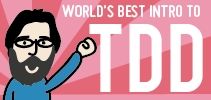"Being Agile": An Example
Summary
You will read many articles about the difference between “doing Agile” and “being Agile”. For better or worse, I have written another one. Thankfully, I have made it brief.
I genuinely dislike this framing of “being Agile” as opposed to “doing Agile”. I don’t want to rehash the reasons here. I mention this in the hopes that you will interpret this article as something more than just another bit of “true, but useless” text about Agile.
At the same time, sometimes we read something that makes us sit up in attention and notice. I did that today. The book is Brad Stulberg’s The Practice of Groundedness, which I have not yet finished, but which I have found helpful already. Here is what I read.
I had Huikai’s insight [about the power of an unclouded mind] in mind in 2019 when I began working with a coaching client named Michelle. Michelle is a senior manager at a large organization. She deeply understands the value of presence, but was struggling to practice it since getting promoted to a new role with more direct reports and projects. As a result, Michelle was feeling like she had little to no control over her day. Compounded over time, this scattered feeling was leading her down an increasingly steep slope toward burnout. She wasn’t spending her time, energy, and attention on the activities she wanted, which was causing her significant frustration, resentment, and anger. Her colleagues were noticing, and her partner was noticing, too. Michelle was not watering the seeds in her life that she wanted to be watering, and it was showing.
I asked her to tell me everything she dreads about her job—all the stuff with little to no value—that was throwing her off. She made a long list. Then I asked her why she doesn’t just stop doing everything on the list. Some of her resistance was habitual (i.e., this is how I’ve always done things). We could work to cut that stuff out immediately. But a number of activities on Michelle’s list involved other people. She feared she might offend her colleagues if she expressed concern that some of their work together was pointless. I told her this was understandable. I asked about her level of confidence that she was accurately appraising the value of the activities on her list. “Oh, I’m pretty sure. Nearly all of this stuff is nonsense,” she told me. I then asked if her colleagues might be thinking the same thing, if perhaps they were scared to confront her about all the nonsense for the same reasons she didn’t want to confront them. Her eyes lit up. “I never really thought of it like that,” she told me.
Over the next few weeks, Michelle initiated open and honest conversations with her coworkers. She was able to eliminate nearly 70 percent of the junk on her list. Not only did she feel freer and more present for what really mattered, but so did everyone on her team.
That. That is being Agile—at least, it represents one key aspect of being Agile: Lightweightness.
It’s in the Agile Manifesto: pursue Simplicity; maximize work not done. As I like to say it: find the 70% of what you do, that you don’t truly need to do, then stop doing it. This demands Courage and it’s not easy. This is one of the reasons I do the work I do: to help make it easier to live and work with Lightweightness.
I teach it in order to help people have the experience that Michelle had, that Michelle gave to her team. I practise it in order to feel freer to give that experience to others. And I teach it in order to remind myself to practise it.
Lightweightness is a key aspect of Agility. Yes. Even with a capital “A”. If you want to “be Agile”, then pursue Lightweightness along the way. There is more, but this is enough to get started. (And yes, I’m being Lightweight about my Lightweightness.)


